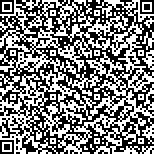附件
|
| 引用本文: | 刘东,张民,沈明,曹志刚,齐天赐,邱银国,段洪涛.基于遥感藻总量和气象因子的巢湖不同湖区藻华预测.湖泊科学,2022,34(4):1090-1101. DOI:10.18307/2022.0404 |
| Liu Dong,Zhang Min,Shen Ming,Cao Zhigang,Qi Tianci,Qiu Yinguo,Duan Hongtao.Predicting algal blooms in different zones of Lake Chaohu based on satellite-derived algal biomass and meteorological factors. J. Lake Sci.2022,34(4):1090-1101. DOI:10.18307/2022.0404 |
|
| |
|
|
| 本文已被:浏览 4388次 下载 3367次 |

码上扫一扫! |
|
|
| 基于遥感藻总量和气象因子的巢湖不同湖区藻华预测 |
|
刘东1, 张民2, 沈明1, 曹志刚1, 齐天赐1, 邱银国1, 段洪涛1,3
|
|
1.中国科学院南京地理与湖泊研究所, 中国科学院流域地理学重点实验室, 南京 210008;2.中国科学院南京地理与湖泊研究所, 湖泊与环境国家重点实验室, 南京 210008;3.西北大学城市与环境学院, 西安 710127
|
|
| 摘要: |
| 湖泊能为人类提供不可或缺的资源,而全球普遍存在的湖泊富营养化导致的藻华频繁暴发正不断损害湖泊生态环境服务功能.为合理保护湖泊环境和防治藻华危害,需预测藻华暴发.以我国富营养巢湖为研究区,本文构建了一种基于遥感藻总量和气象因子的不同湖区藻华暴发概率预测方法.基于MODIS/Aqua数据,研究首先反演了2003—2019年日尺度的藻华分布和考虑垂向结构的水柱藻总量.然后,统计了西、中和东巢湖的藻华面积,判别了藻华/非藻华日,并匹配日平均藻总量和气象因子.最后,筛选出藻华形成的关键影响因子——藻总量、气温和水汽压,并构建了不同湖区日藻华暴发概率的Logistic预测模型.不同湖区月平均藻总量基本一致,但藻华暴发日占比呈“西高东低”特征.对西、中和东巢湖的藻华/非藻华检验样本,模型精度分别为90%、85%和89.5%,模型也适用于2020年夏秋季和冬春季藻华预测.湖泊藻华暴发是藻类大量增殖并在一定气象条件下的产物,故基于遥感藻总量和气象因子的藻华暴发概率预测科学合理,可推广应用于太湖等其他富营养湖泊. |
| 关键词: 巢湖 水柱藻总量 遥感 藻华概率 MODIS |
| DOI:10.18307/2022.0404 |
| 分类号: |
| 基金项目:国家自然科学基金项目(41901299,42101433,41971309)、中国科学院青年创新促进会项目(2021313)、江苏省自然科学基金项目(BK20181102)和中国科学院南京地理与湖泊研究所青年科学家小组项目(E1SL002)联合资助. |
|
| Predicting algal blooms in different zones of Lake Chaohu based on satellite-derived algal biomass and meteorological factors |
|
Liu Dong1, Zhang Min2, Shen Ming1, Cao Zhigang1, Qi Tianci1, Qiu Yinguo1, Duan Hongtao1,3
|
|
1.Key Laboratory of Watershed Geographic Sciences, Nanjing Institute of Geography and Limnology, Chinese Academy of Sciences, Nanjing 210008, P. R. China;2.State Key Laboratory of Lake Science and Environment, Nanjing Institute of Geography and Limnology, Chinese Academy of Sciences, Nanjing 210008, P. R. China;3.College of Urban and Environmental Sciences, Northwest University, Xi'an 710127, P. R. China
|
| Abstract: |
| Lakes provide indispensable resources for humans, but the frequent outbreaks of algal blooms caused by eutrophication in lakes worldwide are continuously damaging the ecological services of lakes. In order to reasonably protect the lake resources and prevent the harm of algal blooms, it is necessary to predict the outbreak of algal blooms. Taking the typical eutrophic Lake Chaohu as the study area, this study constructed a method to predict the probability of algal blooms based on the satellite-derived water column-integrated algal biomass and meteorological factors. Based on MODIS/Aqua data, this study firstly retrieved the algal bloom distributions and water column-integrated algal biomass on different dates during 2003-2019. Then, we calculated the algal blooms area in the West Chaohu, Middle Chaohu and East Chaohu, identified the dates of algal blooms or non-algal blooms, and matched the corresponding satellite-derived water column-integrated algal biomass and meteorological factors data. Finally, we screened out the key factors affecting the formation of algal blooms including algal biomass, air temperature and vapor pressure, and constructed Logistic models for predicting daily algal blooms probability in different lake zones of Lake Chaohu. We found the monthly average algal biomass in different zones were almost the same in Lake Chaohu, but the proportion of days with algal blooms was high in the west and low in the east. The accuracy of the model was 90%, 85% and 89.5% for West Chaohu, Middle Chaohu and East Chaohu, respectively, and the model was also applicable to the prediction of algal bloom in winter-spring and summer-autumn seasons in 2020. Algal blooms in lakes are the results of algal proliferation along with certain meteorological conditions, so the algal bloom probability prediction method based on remote sensing algal biomass and meteorological data is scientific and reasonable, and can be applied to other eutrophic lakes such as Lake Taihu. |
| Key words: Lake Chaohu water-column integrated algal biomass remote sensing algal bloom probability MODIS |
|
|
|
|